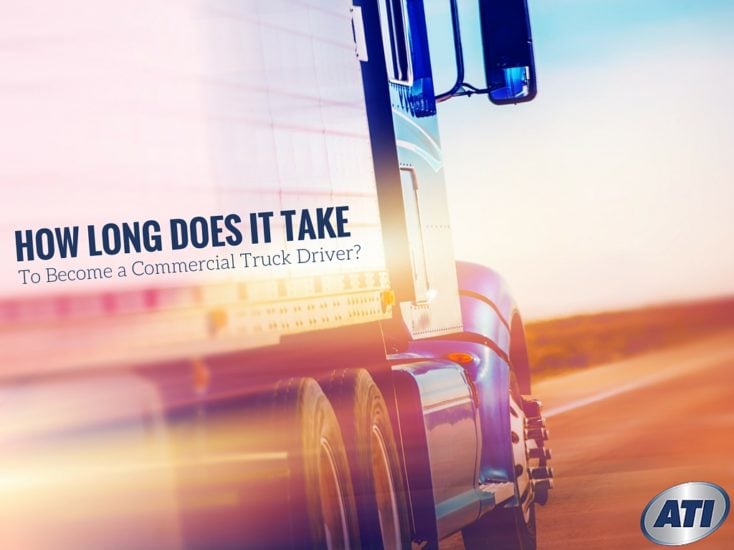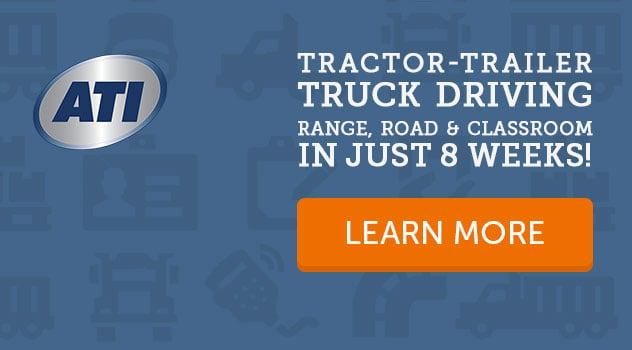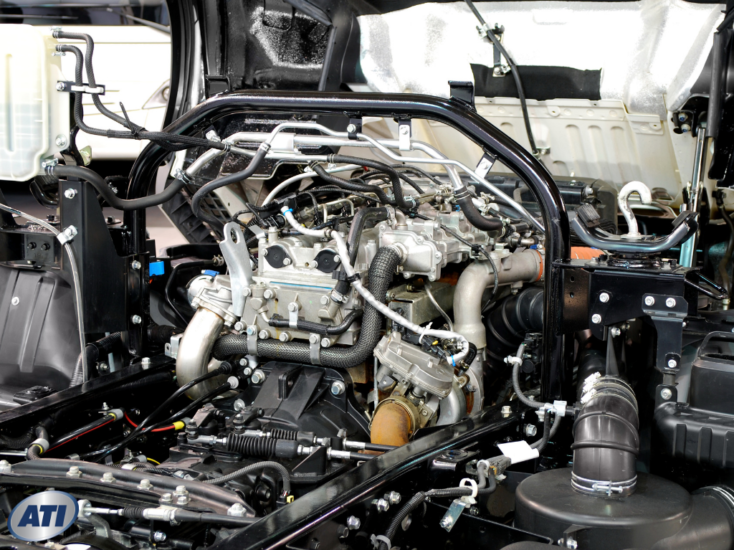How Long Does it Take to Become a Commercial Truck Driver?

Becoming a commercial truck driver is a journey along a fascinating road with several important milestones along the way. Just as any regulated profession has basic entrance requirements, commercial truck driving has its Commercial Driver’s License (CDL) earned by passing road and written tests. The steps needed to earn the CDL are not always the same, just as the steps to becoming a hair stylist, cosmetologist, real estate agent and other licensed jobs are not always the same. But ultimately, the road to becoming a truck driver ends with getting the CDL, after which you become a better commercial truck driver with every mile.
Getting the CDL
The Federal Motor Carrier Safety Administration (FMCSA) regulates licensing of commercial truck drivers. This is so a single agency has regulatory control over safety and training issues, and states cannot have varying requirements that endanger the public by allowing some truck drivers to get by with less stringent training and testing than others.
To earn a CDL, a prospective truck driver starts by getting a Commercial Instruction Permit (CIP), also called by the FMCSA a Commercial Learner’s Permit (CLP). With new regulations that took effect July 8 of this year, CLP and CDL holders must have standardized codes on their documents so anyone looking at any CDL or CLP from any state knows which type of commercial motor vehicle (CMV) the driver can and cannot operate:
- A—Combination Vehicle
- B—Heavy Straight Vehicle
- C—Small Vehicle
Additional endorsements allow a commercial truck driver to handle various types of CMVs:
- T—Double/triple trailers
- P—Passenger vehicle (commercial buses)
- N—Tank vehicle (the milk kind, not the military kind)
- H—Hazardous materials
- X—Combination of tank vehicle and hazardous materials endorsements
- S—School bus
The CDL, you see, only starts your journey toward specialized training, and with a CDL-A license you could be on the road and refining your skills. Take additional training to handle hazardous materials (Haz-Mat) and you add an endorsement to your CDL. Take Haz-Mat and tank and get that endorsement. Keep studying, because with endorsements could come added pay and greater demand for your skills.
Timeline for Truck Driving Training
Getting a CDL is not simply a matter of showing up at a state’s Department of Motor Vehicles (DMV) and taking a written test. You cannot hop into a tractor with no training and hope to drive well enough to pass the test. Backing a 53-foot trailer up is hard and counter-intuitive—which way does the trailer go when I turn the tractor’s steering wheel to the left? What is double clutching, anyway? Proper training takes time, and after the training comes additional road work to become good enough to pass the driving test and earn the CDL.
How long does training take? In as little as eight weeks, you could get through classwork in essential skills:
- Vehicle Systems, Documentation, and Operating Systems—Typically 72 hours of classwork
- Range and Road Operation—Typically, 160 hours of training
Once your training is complete, you have received everything you need to pass a state’s CDL test.
On the Road
Once you have your CDL, you may take a job with a major trucking company and be required to take additional training. The CDL test, as overseen by the FMCSA, covers 20 different skill areas, but individual companies may want their drivers to be more than just “good enough” to handle their trucks. A combination tractor-trailer is a costly piece of equipment, and the cargo can be far more valuable than the vehicle.
This additional training may be with a company driver who acts as a mentor, taking several more weeks to gain over the road experience. Skills are honed in many areas:
- Backing
- Emergency maneuvers
- Fatigue awareness
- Mountain driving
- Night operation
- Shifting
- Space management
Lifetime Learning
Ask any million-miler (a driver who has attained the distinct honor of driving one million accident-free miles) when they stopped learning how to drive their truck and just began driving, and each will say, “I’m still learning.” Fuel conservation, communication technology, air brakes, hazard avoidance and extreme driving conditions are all areas for more learning.
After a few years of experience over the road, you could become a mentor to another bright up-and-comer. Share the hard-earned secrets of success in an interesting, ever-changing job, where the landscape rolls beneath your feet and you make money with every mile you drive. For many CDL holders, their work hardly feels like work—they just drive across our country, seeing sites and meeting great people, and get good pay to do it.
ATI has changed seen 2001 when I grad. We grad in our school cloths and had hotdogs at the end.Good school
Posted by Kenneth Parker on Tuesday, July 23, 2013
The Road to Becoming a Truck Driver Starts Here
To begin the long road to becoming a supremely good commercial truck driver, begin by contacting the Advanced Technology Institute (ATI) to learn more about their commercial truck driving program in Norfolk, Virginia. In as little as eight weeks, you could shift your career from “Park” to “Drive.” Contact us at 800-468-1093 or request information today.
DISCLAIMER – Advanced Technology Institute (ATI) makes no claim, warranty or guarantee as to actual employability or earning potential to current, past or future students or graduates of any educational program offered. The Advanced Technology Institute website is published for informational purposes only. Every effort is made to ensure the accuracy of information contained on the AUTO.edu domain; however, no warranty of accuracy is made. No contractual rights, either expressed or implied, are created by its content.
Gainful Employment Information – Heavy Vehicle Technology with Commercial Driving
Gainful Employment Information – No-CIP Tractor-Trailer Driving
For more information about Advanced Technology Institute or any of our programs click here: http://www.auto.edu/ or http://ow.ly/VoydP.
Industry Knowledge
Welcome to the Advanced Technology Institute's Blog, your resource for industry insights and discussions on technologies shaping the future of automotive, heavy vehicle, hvac, welding, and other related career paths.
Explore how ATI's curriculum and hands-on learning opportunities can propel your career in the tech-driven world.






